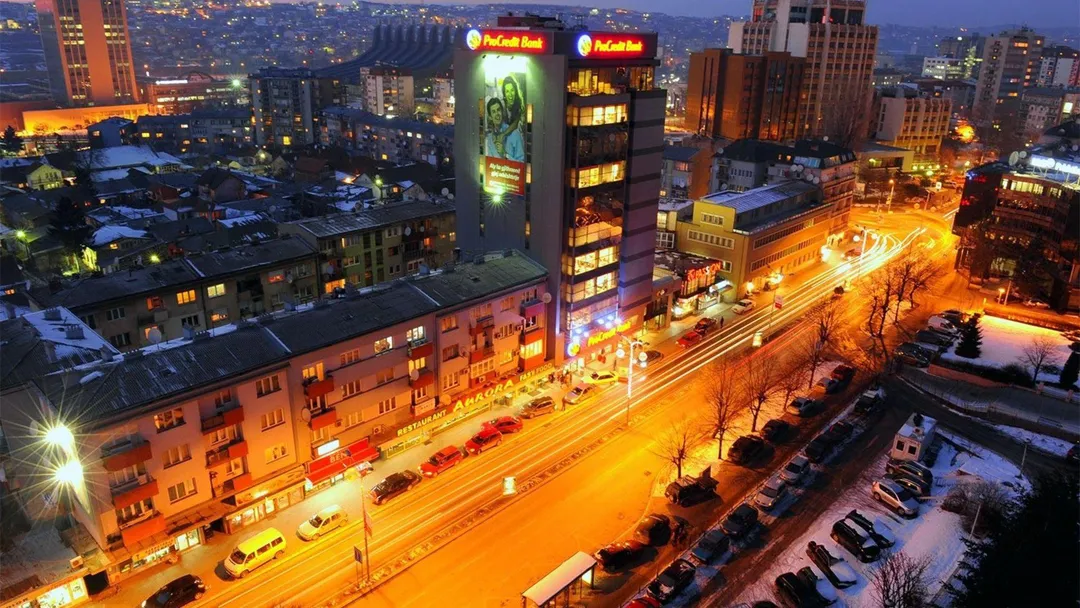Oguz Kaan Kısa · Feb. 2, 2021

In Pristina, the capital of Kosovo, the youngest country in Europe, there is the NEWBORN monument. This monument was opened to the public on the first day of independence. It is painted in a different color each year on the day of independence. It was painted with the flags of the countries that recognized Kosovo during the 5th anniversary celebrations of Kosovo.
Kosovo, one of the youngest countries in the world, declared its independence on 17 February 2008.
Kosovo has a significance to Serbian history and identity because it was the center of the medieval Serbian Kingdom. Collapse of this kingdom also happened in Kosovo. Having lost the 1389 Kosovo war, the Serbian Kingdom withdrew from Kosovo and Kosovo lands fell under Ottoman rule. After this war, the Serbian kingdom quickly lost its power and the dominance in the Balkans passed to the Ottoman Empire.
With the war in Kosovo in 1389, a legend has developed in Serbian history and this legend is known as the Kosovo legend. The legend of Kosovo has three motifs. one of them is Heroism, one is Divinity and the other is Betrayal.
The motif of holiness represents Lazarus, the prince who is the leader of the Serbs. Miloš Obilić, who killed the sultan Murat Hüdavendigar in the war, represents the heroism motif. Vuk brankovic, another son-in-law of prince Lazar, who was transferred from the Serbian side to the Ottoman side during the war, represents the motif of betrayal. These figures and motifs have been featured in Serbian stories, Orthodox sermons, Songs, Stories for centuries and have survived to this day.
The Kosovo war memorial was built in 1953 in memory of Miloš Obilić. In a speech in front of this monument in 1989, the Serb leader of the former Yugoslavia, Milosevic, ignited the fuse of ethnic conflicts in both Kosovo and Yugoslavia.
There is a tomb where the internal organs of Sultan Murat I are buried, 1 kilometer from the Obilić monument. The name of this area was changed to Obilić by the Serbs.
Kosovo, formerly a Serbian province, were mostly inhabited by Muslim Albanians. However, this area was sacred to Serbs, and the Serbian president refused to recognize the rights of the majority. Instead, he wanted to replace Albanian culture and language with Serbian institutions, which led to war. The Kosovo war took place between 1998 and 1999 and was the cause of nearly 10 000 deaths.
There is great love for the USA in Kosovo. Don't be surprised if you see US flags when you go to Kosovo. There is an important reason for this. Kosovars see the US as a liberating state. In particular, they love the former US president Bill Clinton, who led the Clinton family to NATO intervention. He is seen as one of the names who started the process that led the country to independence.
The biggest street of Pristina was named after Bill Clinton and they sculpted a statue of Bill Clinton. Bill Clinton personally revealed the statue of himself to the public, which was completed on the 10th anniversary of the NATO intervention, and he showed his support for this independence again at the end of 10 years.
6 stars on the Kosovo Flag represent 6 ethnic groups living in this country. Albanians, Serbs, Turks, Gorani, Romanians and Bosnians.
Kosovo is Europe's poorest country after Moldova. (2020)
More than 110 countries have recognized Kosovo's independence, but Serbia, Russia and many European countries still do not acknowledge and do not recognize Kosovo's independence. There is no transition from Kosovo to Serbia or from Serbia to Kosovo.
Plisi is the traditional Albanian hat. In ancient times Albanians used to shave their heads and wear Plisi. According to a belief, this tradition is based on a ceremony held in ancient Rome. In this ceremony, after the slave was freed, his hair was shaved and a hat representing freedom was put on his head. The production of Plisi, which is the traditional Albanian hat, is now only made in the city of Kruja in Albania. Although the majority of plisi are white, there are also black ones.
Pristina, which is also the capital of Kosovo, is also the heart of the country. The fact that the best universities of the country are also in this city plays an important role in the high student population. This makes the city much more dynamic, young and fun. Therefore, it is possible to come across bars, pubs, nightclubs and other entertainment venues, as well as business and education centers. Therefore, we can easily say that Pristina is the city with the most vibrant nightlife in the country.
With the arrival of winter, the most important point where all Kosovars meet is undoubtedly the Brezovica National Park. In addition to snowboarding and ski races, open air music festivals can be organized in the park, which has a ski center. Because of Kosovo's small size, almost every point in the country is close to you. Therefore, most Kosovars can spend the night at their home after skiing during the day.

 Back
BackLet us find your dream university.
